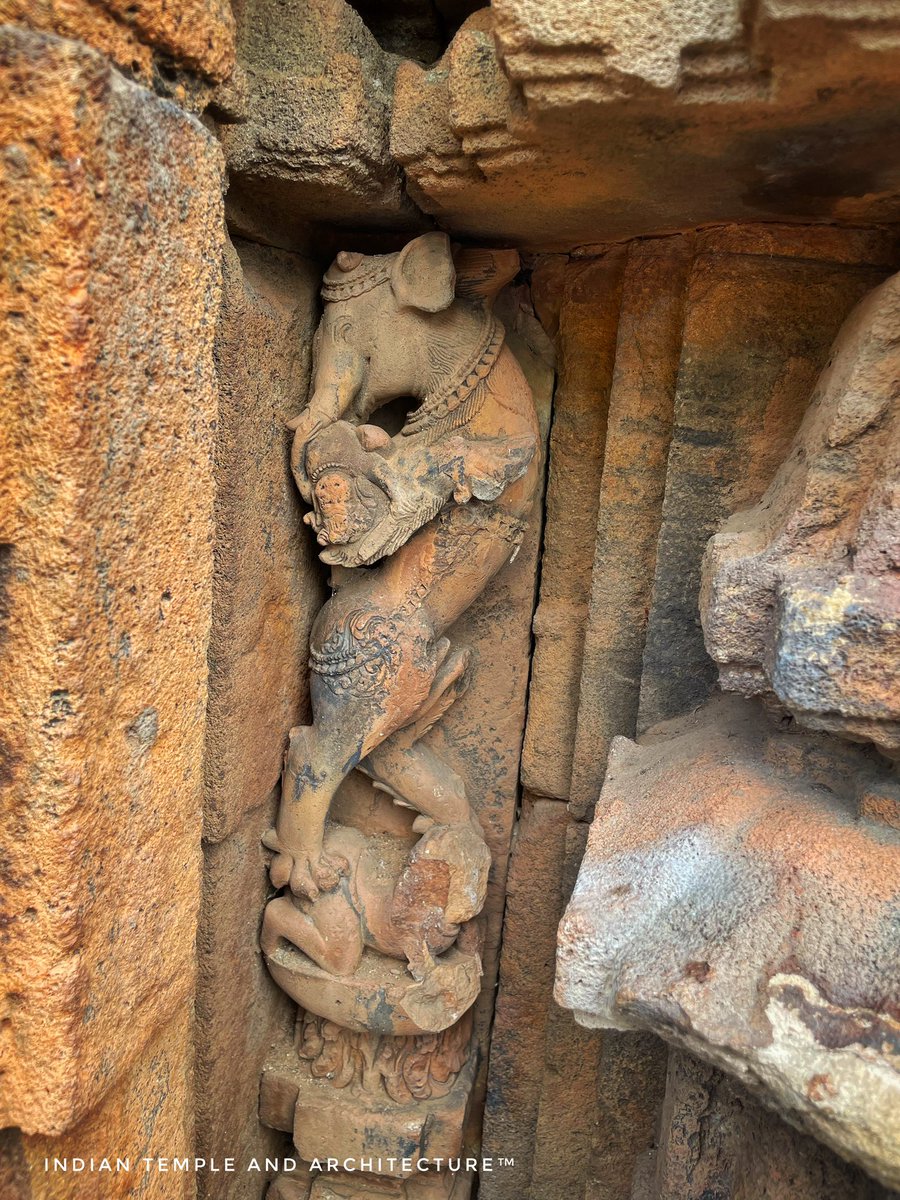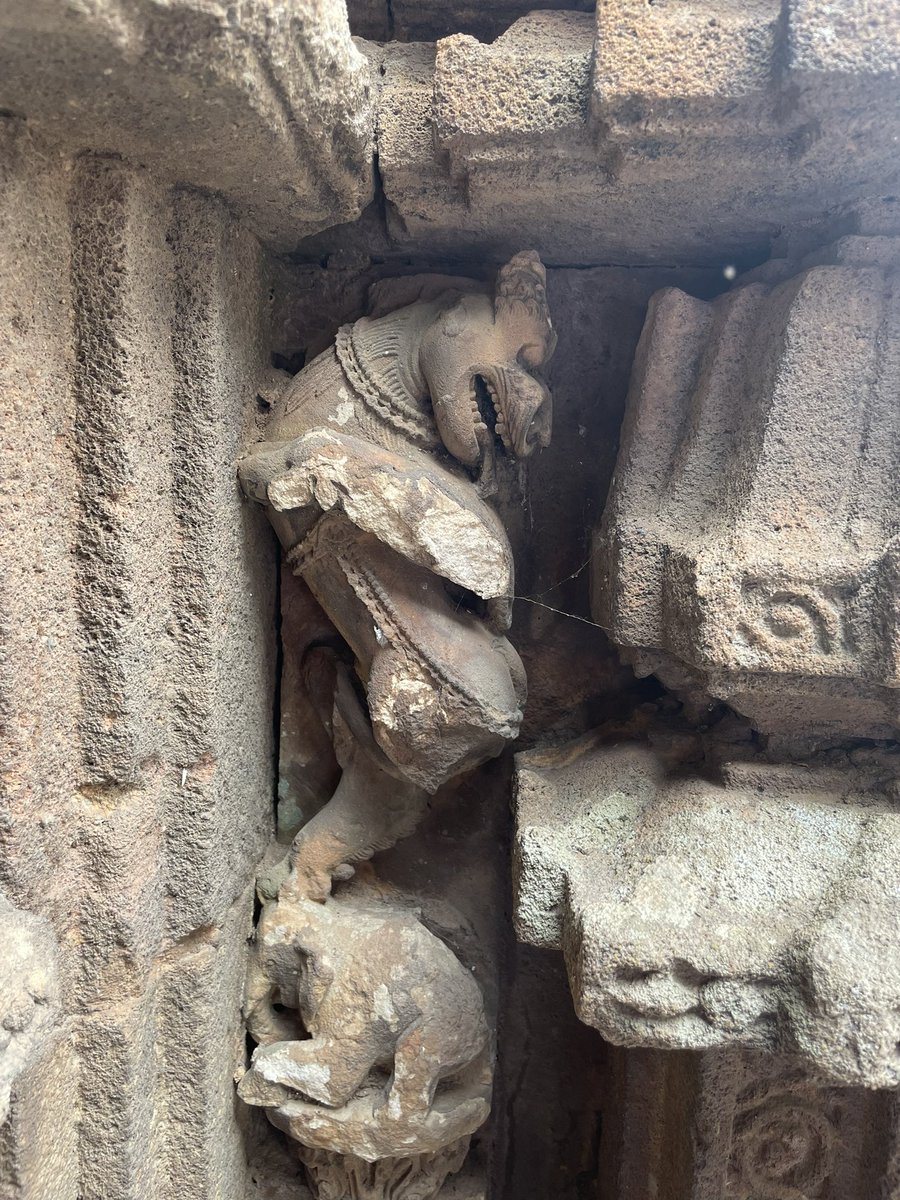Varuneshvara Temple, just at the left side of Maitreshvara Temple, Bhubaneswar, #Odisha.
As per the inscriptions of Papanasini, it was built by the Commander-in-chief of Gajapati Kapilendra Deva, Sri Ranasura Mahasenapati in the year 1449.
⬇️
As per the inscriptions of Papanasini, it was built by the Commander-in-chief of Gajapati Kapilendra Deva, Sri Ranasura Mahasenapati in the year 1449.
⬇️

The temple is built in Pancharatha Style and Panchangabada elevation. The entrance to the Jagamohana has a Navagraha panel together with a sculpture of Maa Gaja-Lakshmi.
⬇️


⬇️



Some of the Vidala Sculptures can be noticed which are generally similar to that of the Megheshvara Temple as I posted earlier. Some rampant lions like Udyata Simha are also seen on the Bada wall.
⬇️

⬇️


Beside the temple it’s Papanasini Pushkarini, which is revered as a divine tank which cleanses all the sins of a person whoever takes bath in it, as described under Ekamra Purana. On Prathamastami, the Chalanti Pratima of Lingaraja, known as Chandrasekhara/Krutibasa, is taken
⬇️
⬇️

out from the temple in a procession to the Varuneshvara temple. The ritual there consists of the ceremonial bathing of the murtys in the Papanasini Pushkarini.
⬇️
⬇️
There at the compound of this, I noticed a Ganesha Murty on a small temple wall which I think might be belonging to 7-8th century CE, much before the construction of these temples.
⬇️
⬇️

• • •
Missing some Tweet in this thread? You can try to
force a refresh

 Read on Twitter
Read on Twitter















